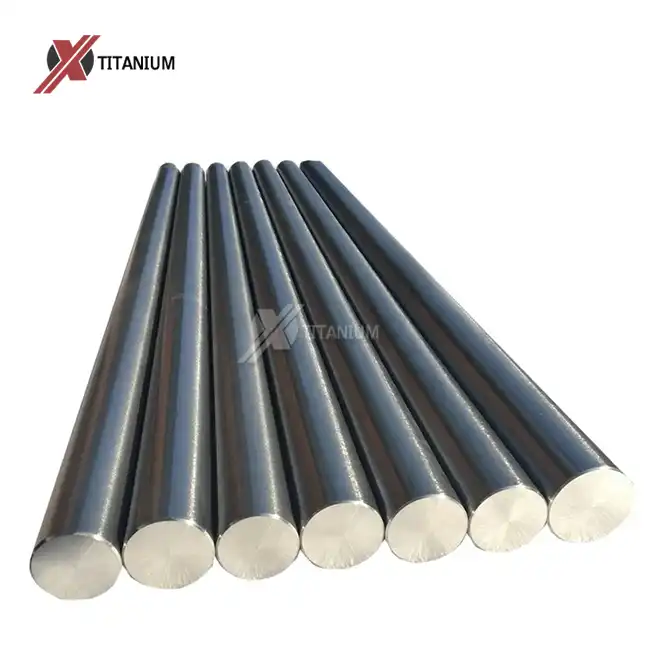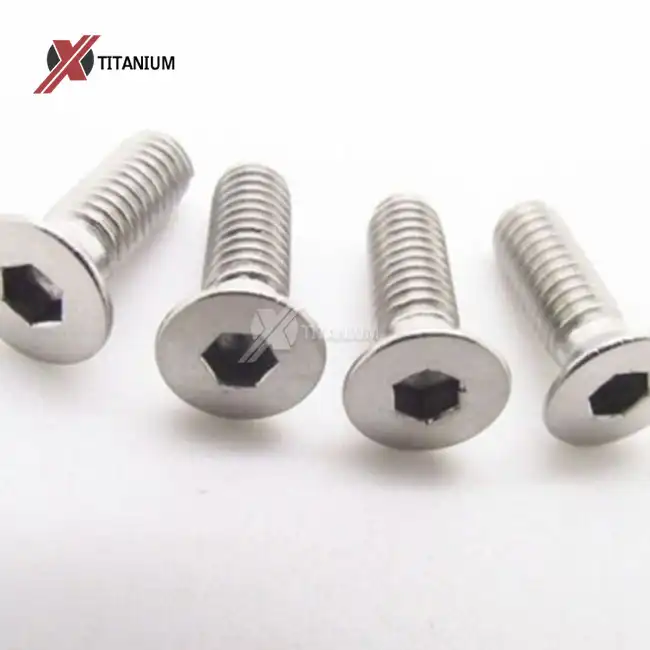Understanding Titanium Alloy Rods
Before we dive into the welding process, it's crucial to understand what makes titanium alloy rods unique. These rods are composed of titanium mixed with other elements to enhance specific properties. The most common titanium alloys used for rods include Grade 5 (Ti-6Al-4V) and Grade 9 (Ti-3Al-2.5V).
Titanium alloy rods boast an impressive combination of characteristics:
- High strength-to-weight ratio
- Excellent corrosion resistance
- Superior biocompatibility
- Good thermal stability
- Low density
These properties make titanium alloy rods ideal for applications in aerospace, medical, chemical, and sports industries. However, these same properties can pose challenges when it comes to welding.
The Unique Properties of Titanium Alloy Rods
Titanium alloy rods exhibit remarkable tensile strength, typically ranging from 900 to 1100 MPa, with yield strengths between 700 and 950 MPa. Their hardness usually falls between 35 and 40 HRC. These mechanical properties, combined with their low density, make them exceptionally strong yet lightweight materials.
Moreover, titanium alloy rods demonstrate excellent corrosion resistance, particularly in marine and chemical environments. This resistance stems from the formation of a stable oxide layer on the surface, which protects the underlying metal from further oxidation.
Welding Challenges with Titanium Alloy Rods
While titanium alloy rods offer numerous benefits, welding them can be challenging due to several factors:
High Reactivity with Atmospheric Gases
Titanium is highly reactive with oxygen, nitrogen, and hydrogen at elevated temperatures. This reactivity can lead to embrittlement and reduced weld strength if proper shielding is not maintained during the welding process.
Formation of Alpha Case
When exposed to oxygen at high temperatures, titanium forms a hard, brittle layer known as alpha case. This layer can compromise the mechanical properties of the weld and surrounding areas.
Low Thermal Conductivity
Titanium alloys have relatively low thermal conductivity compared to other metals. This property can result in localized heating and distortion during welding if heat input is not carefully controlled.
Sensitivity to Contamination
Even small amounts of contaminants can significantly affect the quality of titanium welds. Meticulous cleaning and preparation of the welding area are essential.
Welding Techniques for Titanium Alloy Rods
Despite these challenges, titanium alloy rods can be successfully welded using various techniques. The key lies in selecting the appropriate method and adhering to strict procedural controls.
Gas Tungsten Arc Welding (GTAW)
GTAW, also known as TIG welding, is the most commonly used method for welding titanium alloy rods. This process provides excellent control and produces high-quality welds. Key considerations for GTAW of titanium alloys include:
- Use of pure argon or helium as shielding gas
- Proper gas flow rates to ensure complete shielding
- Use of trailing shields to protect the cooling weld
- Selection of appropriate filler materials
Electron Beam Welding (EBW)
EBW is another effective method for welding titanium alloy rods, especially for thick sections. This process offers several advantages:
- Welding in a vacuum environment, eliminating atmospheric contamination
- High energy density, resulting in deep penetration and narrow heat-affected zones
- Minimal distortion due to localized heating
Laser Beam Welding (LBW)
LBW is gaining popularity for welding titanium alloys due to its precision and ability to produce high-quality welds. Benefits of LBW include:
- Minimal heat input, reducing distortion
- High welding speeds
- Ability to weld in hard-to-reach areas
Regardless of the welding technique chosen, proper preparation and control of the welding environment are crucial for successful welds of titanium alloy rods.
Preparation and Post-Weld Treatment
Successful welding of titanium alloy rods requires meticulous preparation and post-weld treatment:
- Thorough cleaning of the welding area to remove any contaminants
- Use of dedicated tools and equipment for titanium welding to prevent cross-contamination
- Proper storage and handling of titanium alloy rods to prevent surface contamination
- Post-weld heat treatment to relieve residual stresses and optimize mechanical properties
By following these practices, welders can overcome the challenges associated with titanium alloy rods and produce high-quality, durable welds.
Conclusion
Welding titanium alloy rods presents unique challenges due to their reactivity and sensitivity to contamination. However, with the right techniques, equipment, and procedural controls, these materials can be successfully welded. Gas Tungsten Arc Welding, Electron Beam Welding, and Laser Beam Welding are effective methods for joining titanium alloy rods. Proper preparation, shielding, and post-weld treatment are crucial for achieving high-quality welds. By understanding and addressing the specific requirements of titanium alloys, welders can harness the full potential of these exceptional materials in various applications.
At Baoji Chuanglian New Metal Material Co., Ltd., we specialize in providing high-quality titanium alloy rods and other titanium products. Our expertise in titanium manufacturing and processing ensures that our customized titanium alloy rods meet the highest standards for welding and other applications.
FAQ
What are the most common titanium alloys used for rods?
The most common titanium alloys used for rods are Grade 5 (Ti-6Al-4V) and Grade 9 (Ti-3Al-2.5V).
What are the key challenges in welding titanium alloy rods?
The main challenges include high reactivity with atmospheric gases, formation of alpha case, low thermal conductivity, and sensitivity to contamination.
Which welding technique is most commonly used for titanium alloy rods?
Gas Tungsten Arc Welding (GTAW) is the most commonly used method for welding titanium alloy rods.
Why Choose Baoji Chuanglian for Your Titanium Alloy Rod Needs?
As a leading titanium alloy rod manufacturer and supplier, Baoji Chuanglian New Metal Material Co., Ltd. offers unparalleled expertise in producing high-quality, customized titanium alloy rods. Our state-of-the-art factory employs advanced techniques like cold rolling, hot rolling, annealing, and pickling to ensure superior product quality. With our extensive range of surface finishes and rigorous quality testing, we guarantee titanium alloy rods that meet your exact specifications. For expert advice or to place an order, contact us at info@cltifastener.com or djy6580@aliyun.com.
References
1. Smith, J. R. (2019). Advanced Welding Techniques for Titanium Alloys. Journal of Materials Engineering and Performance, 28(4), 2145-2158.
2. Johnson, A. L., & Brown, M. K. (2020). Challenges and Solutions in Titanium Alloy Welding. Welding Journal, 99(5), 145-152.
3. Anderson, T. E., et al. (2018). Comparative Study of Welding Methods for Titanium Alloy Rods. Materials Science and Engineering: A, 735, 182-190.
4. Wilson, R. D. (2021). Optimizing Weld Quality in Titanium Alloys: A Comprehensive Guide. International Journal of Advanced Manufacturing Technology, 112(7), 2011-2025.
5. Thompson, S. L., & Davis, C. R. (2017). Metallurgical Considerations in Welding Titanium Alloy Rods. Metallurgical and Materials Transactions A, 48(10), 4721-4735.




